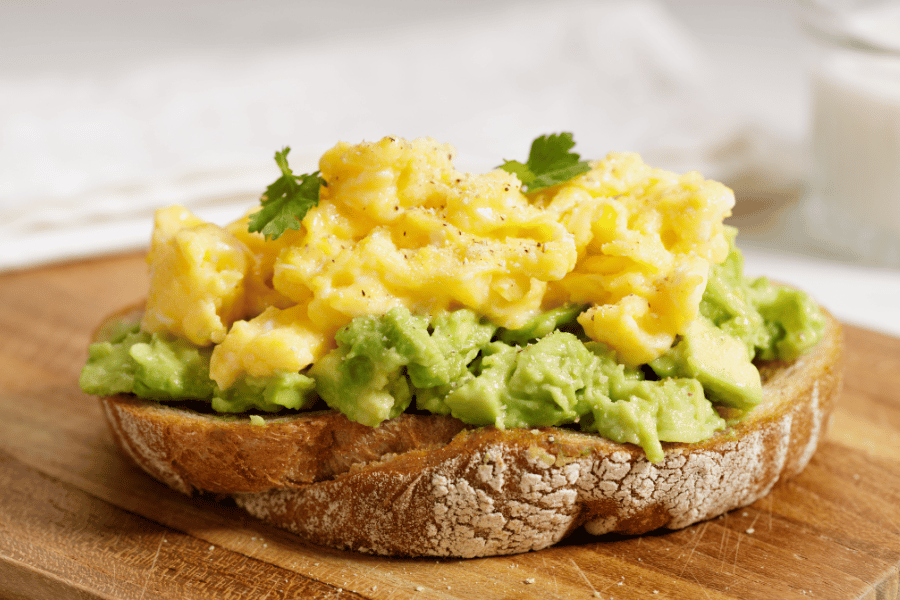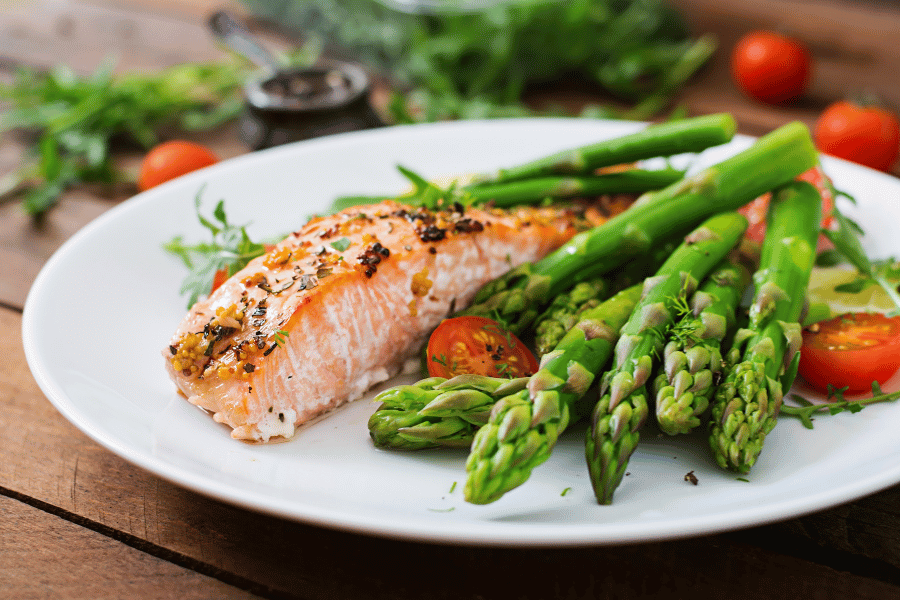The Keto Diet has been a game-changer in the world of weight loss, and its relevance continues to soar in 2024. Originating as a therapeutic diet for epileptic patients, keto has rapidly evolved into a popular lifestyle choice for those seeking effective weight loss solutions. The essence of the keto diet revolves around ketosis, a metabolic state where the body, deprived of carbohydrates, turns to fat as its primary energy source. This shift not only fuels weight loss but also offers a host of health benefits, making it a compelling choice for many.
As we delve into the intricacies of keto diet for weight loss, it’s crucial to understand its foundational principles. This diet emphasizes a high fat, moderate protein, and low carbohydrate intake, creating an optimal environment for weight loss and overall health improvement. In 2024, the keto diet stands out for its adaptability and effectiveness, catering to diverse dietary needs and preferences while maintaining its core focus on health and weight management.
In this comprehensive guide, we’ll explore the keto diet for weight loss journey, providing a 4-week plan tailored to help you achieve your weight loss goals. We’ll cover everything from the basics of the ketogenic diet and how to transition your body into ketosis, to practical tips for starting and maintaining this lifestyle. Each week of the plan is designed to maximize weight loss, address common challenges, and offer strategies for long-term success, ensuring a holistic approach to health and wellness.

Understanding the Keto Diet
The ketogenic, or keto, diet is more than just a trend; it’s a scientifically backed approach to weight loss and health improvement. At its core, the ketogenic diet is defined by a drastic reduction in carbohydrate intake and a significant increase in fat consumption. This dietary shift leads to a metabolic state known as ketosis, where the body efficiently burns fat for energy instead of relying on carbohydrates.
Principles of the Ketogenic Diet
The ketogenic diet is grounded in the principle of altering your body’s primary fuel source. By limiting carbohydrates (usually to 20-50 grams per day), the body is forced to deplete its glucose reserves, leading to a state where fats are broken down in the liver, producing ketones. These ketones then serve as the main energy source, a process that not only aids in weight loss but also provides sustained energy and reduces hunger.
How the Body Enters Ketosis
Transitioning into ketosis is a significant change for your metabolism. It typically takes a few days to a week for the body to adjust to this new energy source. During this transition, the body shifts from relying on glucose from carbohydrates to burning stored fat. The speed of entering ketosis varies depending on factors like individual metabolism, daily activity levels, and adherence to the low-carb requirement.
Benefits of Ketosis for Weight Loss
Ketosis offers multiple benefits for those seeking weight loss:
- Increased Fat Burning: In ketosis, your body becomes incredibly efficient at burning fat for energy, leading to more effective weight loss.
- Appetite Suppression: Many people experience a natural reduction in appetite on the keto diet, which can lead to a lower caloric intake without the discomfort of feeling hungry.
- Improved Insulin Sensitivity: This diet can improve insulin sensitivity, which is beneficial for people with type 2 diabetes or those at risk of developing it.
- Higher Energy Levels: Once adapted to ketosis, many individuals report higher and more stable energy levels, enhancing their ability to exercise and stay active.
The keto diet for weight loss is not just about shedding pounds; it’s about a comprehensive shift in how your body processes energy, leading to a healthier, more balanced lifestyle. As we proceed, we’ll guide you through starting your keto journey, ensuring you’re well-equipped to embrace this transformative diet effectively.

Getting Started with Keto
Embarking on the keto diet for weight loss journey requires preparation and planning. To ensure success, it’s essential to set clear goals, create a personalized keto plan, and understand how to track your macros and calories effectively.
Setting Clear Weight Loss Goals
Before diving into the keto lifestyle, it’s crucial to establish specific, measurable, achievable, relevant, and time-bound (SMART) weight loss goals. This could mean setting a target weight, aiming for a certain body fat percentage, or simply aspiring to fit into a specific clothing size. Clear goals provide motivation and a benchmark to measure your progress.
Creating a Personalized Keto Plan
Every individual’s body is unique, which means a one-size-fits-all approach doesn’t work in diets. A personalized keto plan should take into account your age, gender, activity level, current weight, and weight loss goals. This plan should outline your daily calorie and macro intake, focusing on a high fat, moderate protein, and low carb ratio. Typically, a keto diet comprises approximately 70% fat, 25% protein, and 5% carbohydrates.
Tracking Macros and Calories
Successful keto dieting involves more than just reducing carb intake; it requires a mindful approach to your overall nutrition. Tracking macros (macronutrients: fats, proteins, carbs) and calories is essential. There are various tools and apps available to help you keep track of your intake. Consistently monitoring what you eat ensures you stay within your keto macros, facilitating a smoother transition into and maintenance of ketosis.
Understanding these elements sets the foundation for your keto journey. With clear goals, a personalized plan, and a system for tracking, you’re equipped to embark on this transformative path. As we delve into the first week of your keto diet, remember that patience and persistence are key. The initial phase is all about adjusting to a new way of eating and learning to listen to your body’s cues. Let’s move forward with confidence as you begin this exciting and healthful chapter.
Embarking on your keto journey begins with a well-structured meal plan, critical for easing into this new dietary lifestyle. The first week is pivotal, setting the tone for your keto diet for weight loss experience. Below is a sample meal plan designed to kickstart your journey:
Day 1 to 7 Meal Plan:
| Day | Breakfast | Lunch | Dinner | Snacks | Fluids |
|---|---|---|---|---|---|
| 1 | Scrambled eggs with spinach | Grilled chicken salad | Baked salmon with asparagus | Mixed nuts | Water, herbal tea |
| 2 | Avocado and bacon omelette | Spinach and feta stuffed chicken | Cauliflower rice with shrimp | Greek yogurt with berries | Water, electrolytes |
| 3 | Keto-friendly smoothie | Zucchini noodles with pesto | Grilled steak with broccoli | Cheese cubes and celery sticks | Water, herbal tea |
| 4 | Chia seed pudding | Turkey and avocado lettuce wrap | Baked chicken with Brussels sprouts | Sliced cucumbers with ranch dressing | Water, electrolytes |
| 5 | Smoked salmon and cream cheese roll-ups | Cobb salad | Beef stir-fry with cauliflower rice | Cherry tomatoes and mozzarella | Water, herbal tea |
| 6 | Keto pancakes with sugar-free syrup | Tuna salad | Pork chops with sautéed spinach | Almonds and dark chocolate | Water, electrolytes |
| 7 | Scrambled eggs with mushrooms | Grilled shrimp and avocado | Baked cod with broccoli | Cucumber slices with guacamole | Water, herbal tea |
Key Points for Week 1:
This week is also about managing the infamous keto flu, a common initial side effect as your body transitions into ketosis. Symptoms like fatigue, headaches, and irritability are typical but manageable. Here are some tips to alleviate these symptoms:
- Stay Hydrated: Increase your water intake to combat dehydration.
- Electrolyte Balance: Ensure a good intake of potassium, magnesium, and sodium to prevent electrolyte imbalances.
- Adequate Rest: Get enough sleep to help your body adjust to the dietary changes.
- Mild Exercise: Engage in light physical activities like walking or yoga to boost energy levels.
Monitoring your initial weight loss progress is crucial in this phase. Keep a daily log of your weight and note any changes in your body measurements. This not only tracks your progress but also helps in understanding how your body is responding to the diet. Remember, initial weight loss can be significant due to water loss, so it’s essential to focus on long-term trends rather than immediate results.

Week 2: Maintaining Ketosis
As you move into the second week of your keto diet for weight loss journey, maintaining ketosis becomes the central focus. This phase is about fine-tuning your diet to ensure it aligns with your body’s responses and continues to support weight loss. Here’s how you can effectively navigate this crucial week:
Adjusting the Keto Diet as Needed:
- Listen to Your Body: Pay attention to how you feel. If you experience prolonged fatigue or hunger, consider adjusting your fat and protein intake.
- Macronutrient Ratios: Based on your week 1 experience, tweak the ratios of fats, proteins, and carbs to find your optimal balance.
- Stay Flexible: Be open to modifying your meal plans based on your body’s needs and the progress you’ve made.
Exploring Keto-Friendly Foods:
- Diversify Your Diet: Introduce a variety of keto-friendly foods to prevent monotony. Foods like avocados, nuts, seeds, berries, and leafy greens can add both nutrition and variety.
- Keto Recipes: Experiment with keto recipes to discover new favorites that align with your dietary goals.
- Mindful Snacking: Choose snacks like cheese, olives, or a small handful of berries to keep hunger at bay without affecting ketosis.
Avoiding Common Keto Pitfalls:
- Hidden Carbs: Be vigilant about hidden carbs in sauces, dressings, and packaged foods. Always read labels and opt for whole, unprocessed foods.
- Overeating Protein: While protein is essential, too much can lead to gluconeogenesis, where excess protein is converted into glucose, potentially disrupting ketosis.
- Neglecting Fiber: A common mistake is not consuming enough fiber. Include low-carb, high-fiber vegetables to maintain digestive health.
The key to a successful keto diet is not just about reducing carbs but also about making healthy, sustainable food choices. By adjusting your diet as needed, exploring a variety of keto-friendly foods, and avoiding common pitfalls, you can effectively maintain ketosis and continue your weight loss journey with confidence.
Week 3: Maximizing Weight Loss
As you enter the third week of your keto diet for weight loss program, it’s time to amplify your efforts and focus on maximizing weight loss. This week is about synergizing your diet with exercise, managing cravings effectively, and evaluating the progress you’ve made.
Incorporating Exercise into the Keto Routine:
- Start with Low-Intensity Workouts: Begin with light exercises like walking, cycling, or yoga. These activities are less demanding on your body, which is still adapting to burning fat for fuel.
- Gradually Increase Intensity: As your body becomes more efficient in using fat for energy, you can introduce more intense workouts like strength training or high-intensity interval training (HIIT).
- Listen to Your Body: Pay attention to how your body responds to exercise. If you feel overly fatigued, scale back and gradually increase the intensity.
Managing Cravings and Hunger:
- Healthy Fats are Key: Include sufficient healthy fats in your diet, like avocados and nuts, which can help satiate hunger and reduce cravings.
- Stay Hydrated: Sometimes, thirst is mistaken for hunger. Ensure you’re drinking enough water throughout the day.
- Keto-Friendly Snacks: Have keto-friendly snacks handy for when cravings strike. Cheese, olives, or a small serving of berries can be great options.
Assessing Weight Loss Results So Far:
- Track Your Progress: By now, you should have a clearer picture of your weight loss progress. Continue to monitor your weight and body measurements.
- Reflect on Non-Scale Victories: Weight isn’t the only indicator of success. Notice any changes in how your clothes fit, energy levels, sleep quality, and overall well-being.
- Adjust as Necessary: Based on your results, you might need to adjust your diet or exercise routine. If weight loss has plateaued, consider altering your macronutrient ratios or adding more physical activity.
This third week is about enhancing your keto journey by integrating exercise, mastering craving management, and critically assessing your progress. These steps will not only maximize your weight loss but also contribute to a more sustainable and enjoyable keto lifestyle.
Week 4: Sustaining Progress
As you approach the fourth week of your keto diet for weight loss journey, the focus shifts to sustaining the progress you’ve made and setting the stage for long-term success. This crucial week is about building a sustainable approach to the keto lifestyle and smoothly transitioning to a maintenance phase.
Strategies for Long-Term Success:
- Develop a Sustainable Mindset: View keto as a long-term lifestyle change rather than a short-term diet. Embrace keto-friendly eating as a part of your daily routine.
- Stay Informed: Keep up-to-date with the latest keto research and findings. Understanding the science behind keto can motivate and guide you in making informed dietary choices.
- Build a Supportive Community: Connect with others on the keto journey. Online forums, social media groups, or local meetups can provide support, tips, and encouragement.
Transitioning to a Maintenance Phase:
- Gradual Carb Introduction: If you plan to increase your carb intake, do it gradually. Monitor how your body responds to these changes, and adjust accordingly.
- Find Your Balance: Determine the balance of carbs, fats, and proteins that allows you to maintain your weight while enjoying a broader range of foods.
- Listen to Your Body: Pay close attention to how changes in your diet affect your energy levels, appetite, and overall well-being. This awareness will help you make adjustments to maintain your progress.
Final Thoughts on Keto for Weight Loss in 2024:
- Keto as a Tool: Remember, keto is a powerful tool for weight loss, but it’s most effective when combined with a healthy lifestyle, including regular exercise and adequate sleep.
- Personalization is Key: Keto is not one-size-fits-all. Tailor the diet to fit your individual needs, preferences, and health goals.
- Health Beyond Weight Loss: Beyond shedding pounds, keto has the potential to offer numerous health benefits, such as improved blood sugar control, enhanced mental clarity, and increased energy levels.
As you conclude this initial 4-week keto journey, take pride in the progress you’ve made. The habits and knowledge you’ve gained set a strong foundation for continued success. Moving forward, remember that sustainability and adaptability are crucial in maintaining the benefits of the keto lifestyle in 2024 and beyond.
Frequently Asked Questions (FAQ)
Navigating a keto diet for weight loss often brings up several questions. Here are answers to some of the most frequently asked questions to help you better understand and manage your keto journey.
What are the best foods to eat on a keto diet? The best foods for a keto diet are those that are low in carbs but high in healthy fats and moderate in protein. Some top choices include:
- Fats and Oils: Olive oil, coconut oil, butter, and avocado oil.
- Proteins: Fatty cuts of meat, fish, eggs, and full-fat dairy products like cheese and Greek yogurt.
- Low-Carb Vegetables: Leafy greens, broccoli, cauliflower, zucchini, and peppers.
- Nuts and Seeds: Almonds, walnuts, flaxseeds, and chia seeds.
- Berries: Strawberries, raspberries, and blueberries (in moderation).
How can I overcome keto plateaus? Hitting a plateau on keto can be frustrating, but there are several strategies to break through it:
- Recalculate Your Macros: As you lose weight, your dietary needs change. Recalculate your macros to ensure you’re eating the right amount for your current weight.
- Intermittent Fasting: Incorporating fasting periods can help deepen ketosis and break weight loss plateaus.
- Vary Your Exercise Routine: Increase the intensity or change your workout to challenge your body in new ways.
- Check for Hidden Carbs: Sometimes, hidden carbs sneak into your diet. Review your food intake to ensure you’re not consuming more carbs than you think.
Is the keto diet safe for everyone? While the keto diet can be safe for many people, it’s not suitable for everyone. Individuals with certain health conditions, such as liver or kidney diseases, pancreatitis, and disorders of fat metabolism, should avoid keto. Pregnant or breastfeeding women, and those with a history of eating disorders, should also be cautious. It’s always recommended to consult with a healthcare professional before starting any new diet, including keto.
Can I enjoy occasional cheat meals on keto? Occasional cheat meals can be included in a keto diet, but it’s important to understand their impact:
- Ketosis Disruption: A high-carb cheat meal can take you out of ketosis, which might take a few days to re-enter.
- Psychological Impact: For some, a cheat meal can lead to cravings and make it harder to return to the diet.
- Balanced Approach: If you choose to have a cheat meal, try to keep it balanced and return to your keto diet immediately after.
- Mindful Eating: Enjoy your cheat meal mindfully and without guilt, but be aware of its potential effects on your progress.
Related Posts :
- En Keto Gummies Side Effects S3bf
- En Jazz Jennings Inspirational Weight Loss Journey How The Star Lost Nearly 100 Pounds Msr5
- En Does Apple Cider Vinegar And Cranberry Juice Help You Lose Weight 8 American Tech Professionals Share Their Diet Pl7t
- En Post Malone Weight Loss Behind The Transformation 2 G18m
- En Keto Gummies Shark Tank 13ea